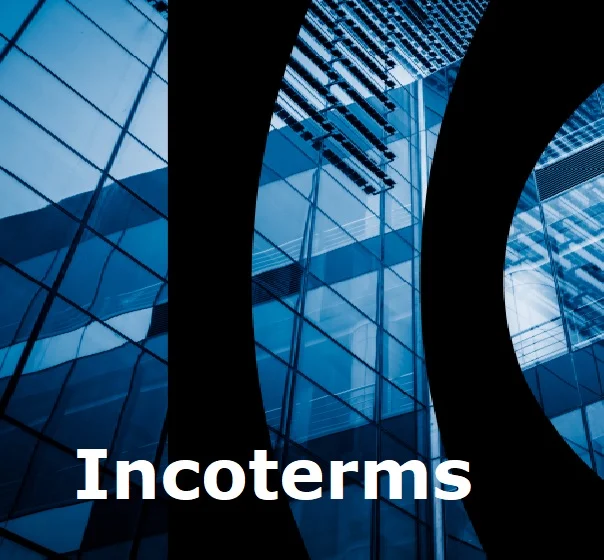Incoterms 2023 in International Trade: 7 Rules and Categories

International Commercial Terms or Incoterms are a set of terms defined by the International Chamber of Commerce (ICC) which is important for anyone involved in shipping of international goods.
First introduced in 1936, the terms were revised in 2020 which are still being used in 2023 and will continue to do so till future revision.
The Incoterms 2023 in International Trade should be known by every trader, producer, buyer, seller, Government and bank.
Rules of Incoterms are divided into four categories- E, F, C and D from which further incoterms are construed.
What are Incoterms and how are they used?
Each Incoterm is a code represented by three letters which defines the responsibility of seller and carrier in delivery of shipment. Use of these terms makes transportation and shipping more constant by providing a single language of communication.
When seller and buyer speak different language things become confusing but by using incoterms the nature of transaction can be kept simple.
The following areas of international commerce and trade are guided by incoterms- parties holding contract and responsibility of risk, tasks involved in shipping, delivery of goods between buyers and sellers, customs and taxes and insurance duties.
Importance of Incoterms 2023 in International Trade
To provide standardization to the commercial terms of delivery of goods, it was considered necessary to provide uniform authentic terms for international transport.
In this view, the International Chamber of Commerce introduced Incoterms to be used in International transactions to removing any uncertainty occurring due to divergent multilingual interpretations. Any corporation or individual in the business of international shipping and transportation would know the importance of these terms.
Those planning to enter the business should also familiarize themselves with these terms because not only they lay out the costs and risks in each transaction but also define what each party is responsible for what losses. By use of these terms, both parties, sellers and buyers, can be ensured of safe and efficient delivery of goods.
Incoterms Rules and Categories
Each Incoterm is defined by the set of four terms, namely E, F, C and D which is further categorized into 11 rules for mode of transport, 7 for any mode and 4 for sea or inland waterway transport.
Categories of Incoterm:
- “E” term (EXW) – It refers to condition where the seller makes the good available at his own premises for the buyer.
- “F” terms (FCA, FAS and FOB) – These refer to condition where the seller delivers the goods to a carrier named by the buyer.
- “C” terms (CFR, CIF, CPT and CIP) – These refer to condition where the seller is responsible for contracting and paying for carriage of the goods, but not for risk or cost of loss or damage to the goods after shipping.
- “D” terms (DAF, DDU and DDP) – These refer to condition where the seller is responsible for risks as well as costs related to anything that happens till shipment arrives at seller.
7 Rules of Incoterm
The following are the seven Incoterms 2023 rules devised for any mode(s) of transport:
EXW- Ex Works
Under this rule, the seller makes goods available at its premises while the buyer is responsible for arranging and loading its goods for transportation. Full costs and risks of loading and moving the goods from origin to destination is bore by the buyer. For buyers, they can have full control over their goods, and for sellers, they can be worry free of the additional costs.
FCA- Free Carrier
The seller delivers the goods to the buyer or any other person specified by the buyer and the goods are loaded on the mode of transport provided by the buyer. The place of loading can either be seller’s place or some other place as decided by the buyer but within seller’s country. Responsibility of the transported goods is of seller’s until the buyer receives the shipment
Check about richest lawyers in the world
CPT- Carriage Paid To
The seller clears the goods for export and delivers it to first carrier chosen upon mutual agreement between the buyer and seller. It is the responsibility of the seller to make sure that the freight is arranged carefully to be delivered to the carrier. Thus, the seller incurs the risks and costs associated with delivering goods only up to the first carrier. As soon as the good is delivered to the carrier, all the risks are transferred from seller to buyer. There can be multiple carriers under this mode of transaction.
CIP- Carriage & Insurance Paid to
Under this rule, the seller clears the goods for export and delivers it to first carrier chosen by the seller itself. It pays for both freight and insurance and the place of delivery is chosen upon mutual agreement between seller and buyer. Once the goods arrive at the point of destination, i.e., to the carrier the risk of damage or loss to the goods is also transferred to the seller.
DAP- Delivered At Place
All the costs and risks are the responsibility of the seller under the Delivery At Place rule. Location of delivery is decided by both seller and buyer after mutual agreement.
DPU- Delivered at Place Unloaded
The seller takes the responsibility of payment and also bears the risks to bring and unload the commodity at the named place of destination. After unloading is complete, the risks are transferred to buyer who is also responsible for import clearance. Under this rule, it is advised that the place to destination is as specific as possible since seller is accountable for all related costs.
DDP- Delivered Duty Paid
Under DDP, the seller takes full responsibility for transporting the goods until they reach an agreed-upon destination. It also arranges for transportation and other costs like export clearance and customs documentation. The rule is quite beneficial for buyer as it relieves it of any risk or additional cost. However, there might be issue if the country of destination has complicated import clearance process.
These are the four Incoterms 2023 rules for Sea and Inland Waterway Transport:
FAS- Free Alongside Ship
Under Free Alongside Ship rule, the seller clears goods for export and places them alongside the buyer’s ship at the named port of departure. The location can be a loading dock or a barge, but not a container terminal. It is the responsibility of the buyer to load the freight onto the vessel and take care of import formalities till the carriage arrives to the final destination.
FOB- Free On Board
The seller takes the responsibility for clearing export and loading the shipment on to the vessel. Once the loading of goods on vessel is complete, all costs and risks are transferred to the seller.
CFR- Cost and Freight
Under Cost and Freight, the seller clears the commodity for export and loads it to the vessel to be carried to the port of destination. Once the shipment is on board, the buyer bears all risks of loss or damage. This mode of transfer is preferred where multiple modes of transport are involved.
CIF- Cost Insurance & Freight
In this rule, seller arranges and pays for transport, clears good for export and also pays for insurance for the goods to the named port. The responsibility to load shipment ot the board is of seller’s. Once the goods have been loaded on board, all risk transfers from seller to buyer.





Thanks, very important for everyone who are involved in international Trade. I am a Central Banker. I need the soft copy of “Incoterms 2022 in international Trade: Rules and Categories for studies.